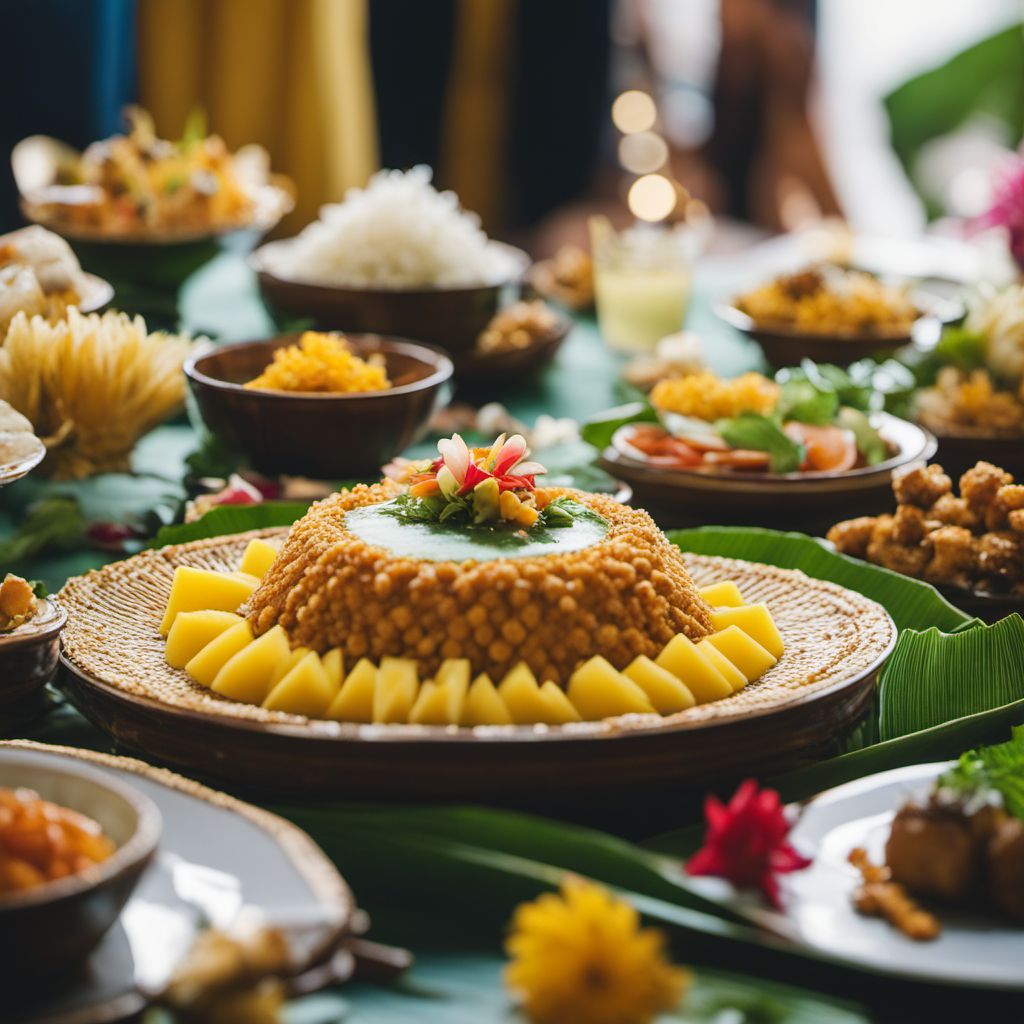
Dish
Tumpeng
Tumpeng is made by cooking rice with coconut milk and turmeric, giving it a yellow color. The cone shape is achieved by using a cone-shaped mold. The side dishes that accompany tumpeng can vary, but usually include vegetables, meat, and fried items. Tumpeng is a symbol of gratitude and is meant to be shared with others.
Origins and history
Tumpeng originated in Java, Indonesia and is believed to have been influenced by Hindu traditions. It is a symbol of gratitude and is meant to represent the harmony and balance of life.
Dietary considerations
Tumpeng is not suitable for those with a gluten intolerance or allergy. It can also be high in calories and fat depending on the side dishes that are served with it.
Variations
There are many variations of tumpeng, with different side dishes and flavors depending on the region of Indonesia. Some variations include seafood, chicken, and vegetarian options.
Presentation and garnishing
Tumpeng is traditionally presented on a large platter with the cone-shaped rice in the center and the side dishes arranged around it. It is often garnished with fresh herbs and flowers.
Tips & Tricks
To achieve the perfect cone shape, it is important to pack the rice tightly into the mold. It is also important to choose a variety of side dishes that complement each other in flavor and texture.
Side-dishes
Common side dishes that accompany tumpeng include fried chicken, tempeh, tofu, vegetables, and sambal (a spicy chili sauce).
Drink pairings
Tumpeng is often served with sweet tea or a traditional Indonesian drink called es teler, which is made with coconut, avocado, and condensed milk.
Delicious Tumpeng recipes
More dishes from this category... Browse all »

Bougna
New Caledonian cuisine

Clam Bake
American cuisine

Cold Plate
Chinese cuisine

Curanto
Chilean cuisine

Heimablídni
Icelandic cuisine

Hog Fry
South American cuisine

Leskovački voz
Serbian cuisine

Ma'a Tahiti
Tahitian cuisine


